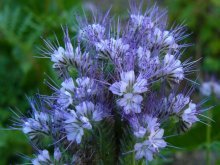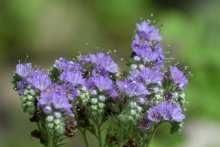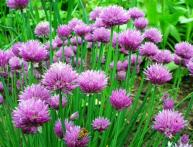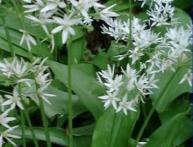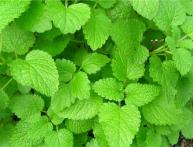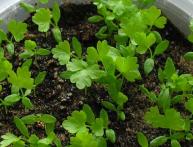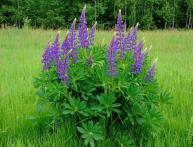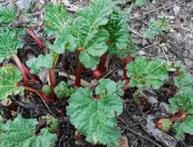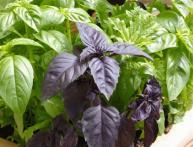Phacelia as green manure: description and characteristics of the plant
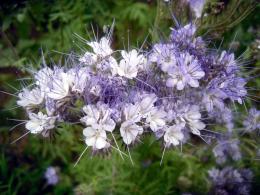
Almost every summer resident grows on his plot, in addition to fruit crops, additional plants whose function is to enrich soil. They are part of the green manure group, and one of these common plants is phacelia.
Content:
Phacelia: plant description
Phacelia is an annual plant of the Aquifolia family. It can be grown not only as an ornamental plant, but also as a compost plant, as well as a honey plant and green manure. There are several varieties of the plant:
- Phacelia bell-shaped. Belongs to an annual species. The inflorescences of the plant are collected in brushes. The flowers are dark blue. Begins to bloom in mid-June.
- Phacelia tansy. Used as an ornamental and agricultural plant. Shoots can reach 50 cm in height.
- Phacelia twisted. This variety is characterized by small blue flowers located at the top of the stem.
In phacelia, the stem is erect, fragile, and can reach a height of up to 90 cm. The leaves are green and pinnate, arranged alternately and covered with small, hard hairs. The flowers have a double five-membered perianth, which are collected in curls. The corolla is blue or pale blue in the shape of a bell. After sowing The appearance of the first flowers is observed after 1-1.5 months.
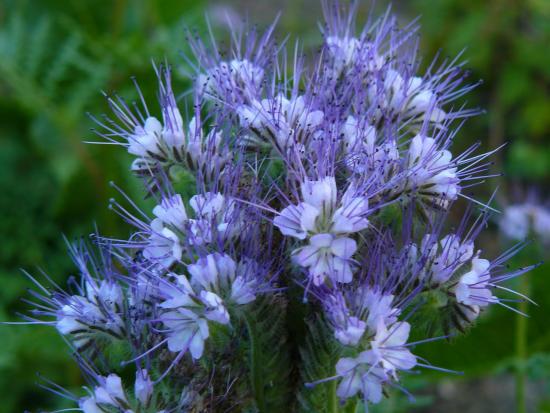
Flowering continues for 2 months. The flowers open sequentially.The plant is undemanding to soil and can be grown on chernozem, loamy, and peaty soils. Phacelia can grow in shade and partial shade, but prefers a sunny place. Seed germination occurs at a temperature of 3-4 degrees. Phacelia is adversely affected by prolonged waterlogging of the soil.
The plant grows quickly and gains green mass. Phacelia tolerates autumn frosts well, but the nectar productivity of the plant in this case decreases. Phacelia can be grown not only as a fertilizer, but also as an ornamental plant. It can be used instead of lawn grass or become a bait for bees to pollinate trees and shrubs.
The benefits of green manure
When growing phacelia in beds, its roots loosen and structure the soil well. Heavy soil becomes light and friable. As a result, plant growth improves, the fruits ripen large and tasty. In winter, phacelia protects the soil from erosion, drought and promotes the accumulation of moisture. In addition, phacelia has the following beneficial properties:
Changes soil acidity levels
- Insects flock to the flowers, eating many garden pests
- Provides minerals and organic substances
- Prevents the development of late blight, root rot and other diseases
- Prevents weed growth
- Attracts bees and bumblebees
- Improves pollination and promotes fruit set
When phacelia leaves decompose, nitrogen is released, which is necessary for the favorable development of plants. In addition, this will avoid introducing manure and other fertilizers into the soil. It is possible to grow garden crops without using fertilizers for 2-3 years. This is one of the main advantages of phacelia as green manure.Phacelia is useful for neighboring garden crops - it is able to retain moisture in the soil.
Features of use
Phacelia as a green manure can be used in different ways to improve and increase yield. To increase soil fertility, seeds are sown several times a season. Sowing phacelia can be done before winter or in spring and summer.
At the same time, it is important that seeds managed to germinate before the first frost. In spring, you can start sowing immediately after the snow begins to melt. The seeds of this green manure are very small, so it is recommended to mix them with sand before sowing. This is necessary so that the seed material is better distributed in the soil. For 100 square meters you will need about 200 g of seeds.
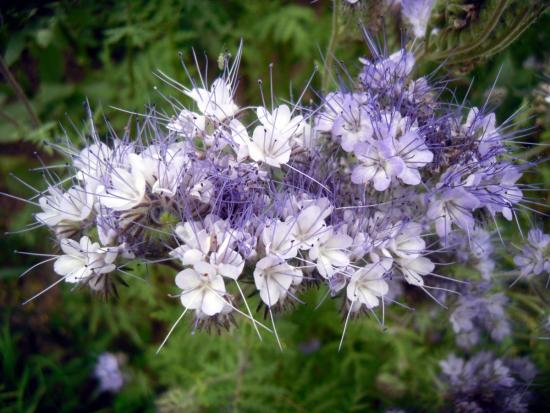
They are scattered on the site and embedded into the ground 2-3 cm using a rake. If the soil is dry, then after sowing it is necessary to water the soil. As soon as the phacelia begins to bloom, you can mow down the green mass. It is important to mow the plant on time. If you do this later, the leaves and stems will become rough, and this will significantly slow down the decomposition process. In addition, harmful microorganisms will develop in the half-rotten mass.
Then mix it with soil and dig up the area. It is recommended to first water the biomass with a special solution that improves decomposition. Next, level the ground and add the next batch of phacelia seeds. With the emergence of shoots and the beginning of flowering, mow the plant again and repeat the procedure.
Until autumn there will be about 3-4 crop rotation events. Next spring, you can grow various vegetables in the prepared area.
After harvesting, it is also recommended to sow phacelia, but do not mow the plant for the winter.The ground will not freeze and will become loose with the onset of spring. Another way to use phacelia is to plant seedlings in thickets. The seedlings are placed in holes made in the grass. This way the plant will not only prevent drying out soil, but also protects from sun rays.
To improve the yield of root crops, phacelia is planted between rows. As a result, soil air exchange improves, and this affects the active formation of potato tubers and their rapid growth. Phacelia is a versatile and popular green manure among gardeners and gardeners, from which you can benefit all year round.
Video about phacelia and its properties as green manure:

